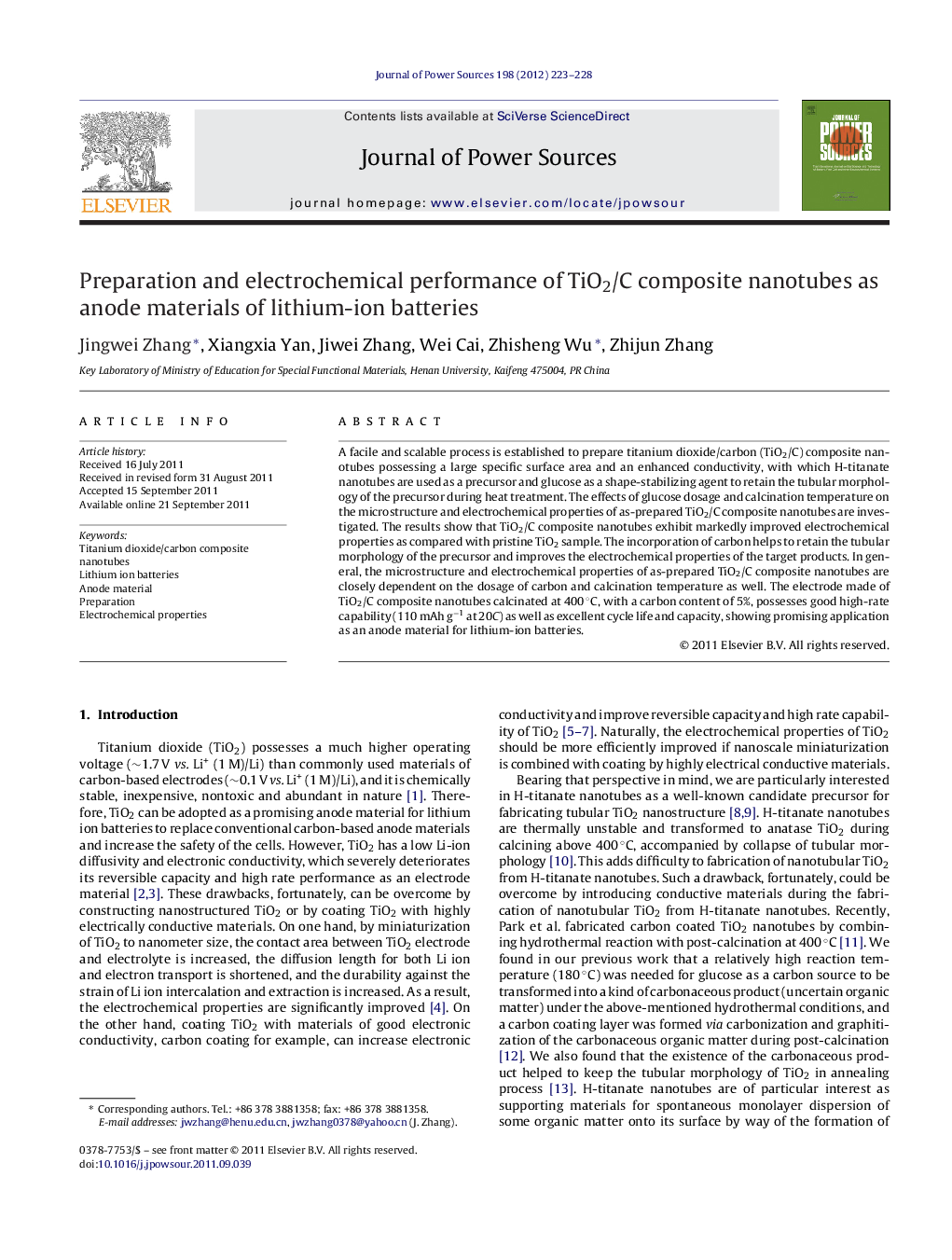| Article ID | Journal | Published Year | Pages | File Type |
|---|---|---|---|---|
| 1288414 | Journal of Power Sources | 2012 | 6 Pages |
A facile and scalable process is established to prepare titanium dioxide/carbon (TiO2/C) composite nanotubes possessing a large specific surface area and an enhanced conductivity, with which H-titanate nanotubes are used as a precursor and glucose as a shape-stabilizing agent to retain the tubular morphology of the precursor during heat treatment. The effects of glucose dosage and calcination temperature on the microstructure and electrochemical properties of as-prepared TiO2/C composite nanotubes are investigated. The results show that TiO2/C composite nanotubes exhibit markedly improved electrochemical properties as compared with pristine TiO2 sample. The incorporation of carbon helps to retain the tubular morphology of the precursor and improves the electrochemical properties of the target products. In general, the microstructure and electrochemical properties of as-prepared TiO2/C composite nanotubes are closely dependent on the dosage of carbon and calcination temperature as well. The electrode made of TiO2/C composite nanotubes calcinated at 400 °C, with a carbon content of 5%, possesses good high-rate capability (110 mAh g−1 at 20C) as well as excellent cycle life and capacity, showing promising application as an anode material for lithium-ion batteries.
► A facile and scalable process is established to prepare TiO2/C composite nanotube. ► TiO2/C composite nanotubes exhibit markedly improved electrochemical properties. ► Glucose can be used as shape-stabilizing agent to retain the tubular morphology.
